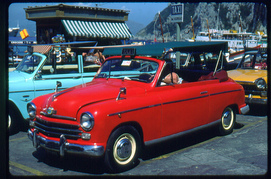 FIat 1400 taxi FIat 1400 taxi If you are going to the Isle of Capri while visiting Campagnia--Naples or the Amalfi Coast--then you might want to feel what film stars feel like and take a taxi ride around the island. But these aren't just any taxis... these are Capri taxis. Some are as long as limos, some like vans and others are vintage custom Italian vehicles--all with their roofs cut off to enjoy the sun. And if the combination of sun and dizzying views over the cliff edge get you a bit light headed, ask the driver to roll out the canopy over your head to help keep your cool. These unique looking, top-chopped, sun-worshiping taxis first appeared on Capri in the 1930s. They were mostly Fiat convertibles, or custom made convertibles with their roofs cut off. By the 1950's, they'd become a welcoming symbol for the chic isle, with some drivers becoming as well known as the film stars they transported... Sophia Loren, Princess Margaret and Brigitte Bardot. Later on, Jackie Onassis and her hubbie-to-be Aristotle Onassis brought even more attention to them. One driver even proved his loyalty when Onassis left wallet on his yacht, the driver paid for their meal. This is the stuff legends are made out of--at least in chic Capri. By the seventies, finding replacement parts for the colorful canopy frilled taxis became more difficult and today only a handful of these vintage vehicles can be hired--for higher than normal fees. There are hotels that use vintage taxis to transport their guests from the harbor to their hotel. Still, the modern breed of unique vehicles offer the same sun and wind filled adventurous ride while passengers soak in the sights along their way... There are many taxis to pick from at the taxi parking areas as you get off the ferry or you can book ahead online to plan a tour. Most do a circumnavigation of the island, giving you all the best views from the magnificent curvy roads. You can choose from the less expensive van or sedan type or, if you can find one and can afford it, choose to ride in a 1950s or 60s era classic vehicle. Circumnavigation tours around the island range from around $100 to $200 dollars, depending on the vehicle and the length of your tour. To go from Marina Grande up the mountain to the Piazzetta in Capri town, a 10 minute taxi ride will cost you about $22 (whereas the Funicular rail car will cost about $3). It might well be worth splurging on the ride for a truly unique experience. (I'd still take the funicular for that experience also!)  Now I for one would love to be at the wheel while driving the twisty roads of Capri, as I did on the Amalfi Coast. (Click HERE for Amalfi Coast Drive: Part Paradise - Part Hell). Voyagers to Capri should be aware that, while renting a car is possible in Capri, it's not recommended. The rental car rates in Capri are much higher than rates in Italy, mainly because the Capri government itself wants to discourage excess car traffic. The situation is so bad that in the busiest months travel by car is restricted to residents only! (In my opinion, they should also do this along the Amalfi Coast during the high season). So when visiting Capri, relax and let someone else do the driving for you. Besides these taxis, there are other local taxi services you can call by phone, taxi stands, cheap buses, the famous funicular in Capri town, and of course, the always available and pleasant water taxis and ferries. When you travel to Italy, there are a few choices of how to plan your accommodations, some limiting your options for meals, while others leave a lot of options open, especially if you would like to try cooking for yourselves in Bella Italia. First, there's staying in hotels, which usually (but not always) include cornetto and other pastries, jam, honey and espresso breakfast, and then eating dinner in their (typically) over priced ristorante (if they even have one). Perhaps you'll book yourself into a small and cozy Bed & Breakfast, where you normally receive an Italian style breakfast, or worse--a colazione Americana (American Breakfast)--a poor impersonation of the egg and bacon breakfasts that you are used to--picture scrambled eggs sitting out all morning, fatty, greasy bacon and the packaged, hard dry bread that Italians consider "toast". But there is a third option... staying in an apartment, house or an entire villa, or an agriturismo (a suite or room at a working farm), each with a full functioning kitchen. Yes, you can cook your own meals whenever you're inspired to do so. It's these options that afford you the most flexibility. But of course, you'll also be eating out... when you discover that little, homey, non-touristy trattoria in the back streets; having sweet pastries and espresso while standing in the local bar/tabacchi like a real Italian (remember, they are more like snack shops in Italy); and eating pizza in a ristorante tourista just because it's right across the street from the Colosseum (yes, we did it). Or perhaps you feel a need to say you had a Big Mac in Rome (don't do it!) or you just have to have a foot long at an Italian Subway. (ugh) Eh, to each his own. You might even want to check out a gigantic slice of pizza at Spizzico--where one slice is a quarter section of a whole pie--an Italian fast food pizza chain owned by parent company Autogrill, a fast food restaurant you might want to stop at while driving on the large Autoroutes in Italy. Hey, I hear their panini aren't bad. But other times you'll be buying pastries, a special blend of coffee, some fresh ricotta and honey, and buying some of those multicolored eggs with deep orange yolks (Italians call that part "red") in the mercato... just so you can sleep in a bit and make your own breakfast the nest morning. Or simply stocking up in the local market so you always having a backup plan--picnics and bread & cheese snacks on the road, or cooking at "home" with some new found authentic Italian ingredients: local pasta, tomatoes and veggies, prosciutto, cheeses, sausages, breads, wines and balsamic. We saw delicious produce and ingredients everywhere we went--even the supermarkets have amazing choices. Remember, you can do some culinary exploration while in your own Italian cucina (kitchen). Suggestion: a simple frittata with a new type of cheese, a sausage you never heard of or using those odd green tomatoes you saw at the market. And of course, there's always the breads. Chop some olives, tomatoes sprinkle with sea salt and olive oil and top off your bread for your very own bruschetta! Having a home base is a wonderful way to expand your culinary horizons while using the amazing ingredients from the region you are staying in. As a plus, if you stay at an authentic agriturismo (a working farm that also rents rooms or apartments), you might be able to take cooking classes on how to make pasta, make cheese, cook regional recipes and more. Your first day in Italy will be tiring, but as you travel toward your apartment, you will need to stop for basic supplies--if it's not to late in the day. Before booking your accommodation, ask about the kind of kitchen equipment they have for you to use (some might have a cooktop but no oven), and how much basic pantry items they keep in the cupboards. For example, in one agriturismo apartment we rented in Tuscany, they had coffee, tea, sugar, spices, salt, pepper, olive oil and even had little breads, pastries, honey and jam (the owners live there and farm the land). It was easy to have a snack the first night, make breakfast the next morning and other meals thereafter. They really had a complete kitchen and pantry. 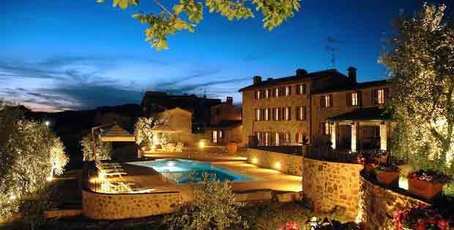 Agriturismo farm experience or just a hotel? You decide. Agriturismo farm experience or just a hotel? You decide. Beware: Phoney Agriturismos Yet, in another of the new breed of overdeveloped faux agriturismo, created by investors who don't live or work there, you will find little authenticity, no hands-on farm experiences, very little history, young and handsome or pretty smartphone-clinging staff (who live in the nearby cities), cheap tourist wine, terrible olive oil, and an overpriced on-site cafe. Everything is extra. The wine, the oil, the soap for the washer. In Mormoraia, an agriturismo we rented outside of San Gimignano, as chic and stylish as it was, they didn't have salt, pepper, coffee, tea, oil, ice trays, a cutting board or even a single good chef's knife. (The TV didn't even work--and no one seemed to care). The place produced their own wine and olive oil--but they didn't think to supply small samples for the kitchens in their apartments so guests could cook with them. These types of places are built by a recent wave of out-of-region (or foreign) developers who buy up old farms and vineyards, renovate them to look pretty as a postcard, put fancy labels on their wine and oil, but are about authentic as a Brit wearing a "Kiss me, I'm Italian" T-shirt. I really emphasize due diligence on your part in researching beforehand--and reading all the reviews of an agriturismo you're considering. If you want to cook while in Italy, make sure your accommodations can handle it. Another tip... look at the photos people post on sites like TripAdvisor. If the agriturismo looks too clean and neat, if their are no dogs, goats, pigs, or kids running around, and if you don't see photos of the actual proprietors cooking and engaging with guests, it's more than likely a phoney-Bologna imitation of the real deal. Where to Buy Food If you have your agenda well planned ahead of time, you can use a tool like Google Earth or Google Map to find places to shop in the area. Zoom into the area you will be staying in and search for "supermarket" or "supermercato". Google speaks all languages. I did this before we left and put my custom Google pin maps on my Kindle and smart phone before we left. Stop at an alimentari (literally translates as "food") or even a supermercato. Here are the types of places you can stock up:
One more thing... small towns will have alimentari and other small shops with little or no signs. Often it's difficult to tell what type of shop it is. They will have metal roll-up doors that will more than likely be closed (either partially or all the way) from 12 - 3pm. Try to do your food shopping earlier in the morning to be certain to find the shops you need open. If need be, ask someone "dove si trova la (il) ______ più vicina?", (Where is found the nearest _________?") filling in the blank with the type of shop you need. Specialty Stores
Late in the day (4-7 pm) is the best time to shop in boutiques or gift shops. A new trend in Italy is to put "-eria" at the end of a word to describe a shop. Yogurteria, Hamburgheria, Fruiteria, Disceria (for CDs), Vineria (wine), etc.  How to ask for what you need In Italy you will be dealing with the metric system... kilos, not pounds. Una etto (abbreviation of hectogram) is asking for 100 grams, 200 grams would be due etti, three... tre etti, and so on. I even asked for simple, "cento" and got 100 grams, which is about a quarter of a pound--about the amount of cold cuts for one or two sandwiches, or enough cheese for your lunch. If you want a wedge of cheese, hold out your fingers to how thick you want it sliced and say "Come questo" (like this). If you want thicker say "più spessa" (more thick), for thinner say "più sottile" (more thin). Point close to you for "questo" (this one) and point away for "quello" (that one). When thinking in kilos, think about half of what you would ask for in pounds. (A kilo equals 2.2 pounds). If you want about a pound, ask for a chilo (pronounced KEY-lo). In Italy, a kilogram is chilo. Half a kilo would be mezzo chilo. Be careful about these two... one quarter kilo is "un quarto chilo". Four kilos would be "quattro chilo". If you want to ask for something "to-go" you ask for "portare fuori" (literally, "bring out"). Remember that numbers for pricing are written a bit differently. Decimal points and commas are switched around... a leather jacket can cost €1.000,00 but never would cost €1,000 (that would be one Euro with an extra zero). A house might cost €1.000.000,67 (one million plus 67 cents... don't know what the 67 cents is for). A gelato might cost €3,50 (without the decimal point). Pantry Staples
I'll do a separate post on numbers soon. You definitely need to know how to say and hear numbers when shopping, in hotels, restaurants, taxis and trains. I hope you'll get a chance to do some food shopping in Italy... and don't miss the Italian supermarket experience. Soak in the differences, try to translate the names on boxes and cans, and enjoy trying to figure out those odd veggies...  It's called Cardi, or Cardoon and tastes like artichokes It's called Cardi, or Cardoon and tastes like artichokes Magia bene! --Jerry Finzi Please, stop by our SURVEY and spend 60 seconds telling us how we could make our blog better! Grazie! You can also follow Grand Voyage Italy on: Google+ StumbleUpon Tumblr Copyright 2016 Jerry Finzi/Grand Voyage Italy, All rights reserved  Olive harvesting Olive harvesting Many people have dreams of spending their Italian vacation on a farm... seeing cheese and wine made, perhaps learning how to make pasta, milk a goat or make fresh sausage. Of course, you can always spend your vacation on an agriturismo in the region of your choice. An agriturismo will typically have fairly posh and comfy apartments or rooms, wine tastings (for extra $$$), cooking lessons (again, more $$$) and even their own restaurants on site--some include meals, most don't. You can find some that are historic and agriculturally oriented, but many are simply overly developed investment hotelier or B&B properties often owned by non-Italian investors and staffed by young, inexperienced hotel staff. The wine and olive oil they produce and sell to tourists are not known to be high quality. If you research meticulously, you can find some that are actually working farms run by the same family that lives and works on the farm. But there is another way to have an authentic, hands-on experience with Italian agricultural organic techniques, food-to-table, and Slow Food movements.... WWOOF is a worldwide movement linking volunteers with organic farmers and growers to promote cultural and educational experiences based on trust and non-monetary exchange--yes, people work for free--but they gain a whole lot more than money in these experiences. The goal of the organization is to help spread the message of building a sustainable global community. As the average age of farmers is 55, the world needs more young people to return from the big city job centers to sustain farming--especially organic methods--and carry on the skills and craftsmanship needed for smaller, owner-operator farms to survive. Many young Americans see this as an opportunity to learn authentic skills that they can use to start their own green enterprises at home.  Planting the seed of knowledge Planting the seed of knowledge What is WWOOFing? WWOOF stands for World Wide Opportunities on Organic Farms, but the concept of having a working vacation on farms has been around for a while under the older Willing Workers on Organic Farms, where city dwellers in the UK volunteered on organic farms in the countryside. Always wanted to work on a farm? Want to learn some skills to help start your own organic farm? Want to learn the Slow Food method of growing and then producing your own artisanal food products? Read on... you might have just found a great way to have a very valuable experience...  Crushing grapes the old-fashioned way Crushing grapes the old-fashioned way There are WWOOF farms in many countries around the world... and luckily for the Italophile interested in honing their organic skills, Italy has many opportunities, too. Membership for one year is €35. There are over 650 WWOOF host farm members in Italy in many areas of specialty: cheesemaking, olives and olive oil production, vines and wines, sheep & herding, goats, almonds, fowl (chickens, ducks and others), cows & milking, pigs & sausage, butchering, beekeeping, hay & cereals and vegetables of all kinds. In addition, some offer opportunities to learn construction trades relating to farming... carpentry, masonry, historic restoration, blacksmithing and more. 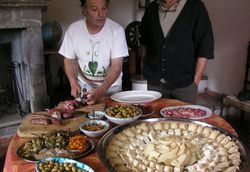 The meals can be fantastico! The meals can be fantastico! Volunteers stay in a variety of accommodations from tents to castles, Trulli to masseria farm complexes, converted barns and shared dorms. There are even those that welcome entire families with programs for children. The WWOOF site has an excellent keyword driven search engine that can help you locate a perfect match for the skills you are interested in experiencing first hand. Click for a LIST OF WWOOF Farms in Italy. To register for a WWOOF experience, SIGN UP HERE.  Before our voyage to Italy, we tried a couple of different methods to learn Italian. Our first was a Pimsleur set of CDs that we had for several years (we had planned to go to Italy once before but had to cancel at the last minute). These are excellent CDs which guide you through conversational Italian lessons, grouped by specific subject.... transportation, shopping, food, meeting people, etc. My wife, Lisa, also bought a subscription to Rosetta Stone, both on our PC and our smart devices, but their approach was not that effective with us... you look at pictures and hear only Italian, supposedly the way a baby learns a language by associating a word with what it is looking at. For us, it didn't work well. And besides, once we finished the first bunch of lessons, they wanted more and more cash to keep unlocking more chapters. A good idea to try is making a list of phrases that you want to focus on--business versus casual stuff, or specific for kids versus the needs of seniors. Categorize these by subject on paper or in MS Word first, then you can then go to Google Translate and enter them in one by one, saving each (pressing the Star) as you go along. In this way you can build your own personal database of your most important phrases listed by category. This would be useful to look up phrases before you get into a taxi, for example... scroll down to your section on travel phrases and look for the right one. I had sections for shopping, accommodations, train travel, food and restaurants, etc. Lucas, Lisa and I would have fun sessions testing each other. I even had a section with translations for curses and other phrases I'd need to use in an emergency. For instance, if I felt threatened, if I wanted to get rid of a panhandler, and other distasteful situations.... like "Va Via!" (hit the road). I even had a nice group of curse words and phrases in there. This actually worked several times to get rid of nefarious types. Imagine going to a doctor or pharmacist, and think about what you might need to ask or explain. I would need to know how to ask for an inhaler for my asthma, anti-inflammatory for arthritis or even something as simple as lip balm. I needed to know how to let someone know that my son was lost, sick, hurt and where his pain was located. A Google Translate Phrasebook can be endlessly customized to you and your needs. After you fine tune your own Phrasebook, Google Translate can output a spreadsheet into Google Docs for you, which you can always access online or download document file copies onto your devices for when you can't get an online connection. See mine below... I copied it my Phrasebook doc onto my Kindle and phones as a ready reference file. I remember studying it right before important events as we were traveling. It helped me retain mainly the phrases and words that I knew for sure I'd need to use that day. The only warning I'll give is to use a single device when creating your personal phrasebook. It seems that each device saved its own version of the Phrasebook. At the beginning I would use the PC for some translating and my Kindle for the rest. Each list was different. I would have saved a lot of time typing in the list from one to merge into the other if I knew about this ahead of time. As I researched our Voyage to Italy, I kept Google Translate always open in a browser tab. I could easily pop over to the tab, cutting and pasting Italian phrases that I found on Italian web sites (ones that offered ny English translation), or the reverse... typing in an English word or phrase to see the translation, then using the Italian phrase to find what I was looking for on an Italian website. You can also hear the translation spoken by clicking the speaker icon on the bottom left of a panel. The only trouble is, the voice is female. There is no way to change the voice on Google Translate. Each language has it's own voice.... some are male, some female. Here is part of my own list I created of phrases and words I knew I might need... Even though I'm back in the States, I still use Google Translate every day. I keep adding to my Phrasebook--it helps to keep practicing. I often use it to help communicate with my new Grand Voyage Italy friends in Italy... I just need to keep what I need to say jargon-free and say everything in simplistic ways, otherwise the translation might sound odd to a real Italian.
After all, we want to go back to Italy someday... in una data futura... Ciao! --Jerry Finzi Please, stop by our SURVEY and spend 60 seconds telling us how we could make our blog better! Grazie! You can also follow Grand Voyage Italy on: Google+ StumbleUpon Tumblr Before I got to Italy I did research about driving on Italian roads. I figured it wouldn't be all that different from here in the States and I did fine in France years ago, so no big deal. Many signs are very understandable, but some are unique to Italy or need some explanation. Don't stop reading until you see the STOP sign... The sign at the left is a YIELD sign. It's shaped just like ours but never has words on it. Of course, Italians ignore this sign completely. They just sort of roll into traffic and the traffic is expected to brake and let the car into the traffic flow. This is fact. This is how it works everywhere in Italy (even more so around Naples and other big cities). The drivers on the main road or street are the ones expected to do the YIELDing. The other signs might be confused with yield signs, and they are really are more like MERGE, except they are used for all sorts of intersections too. Just remember that the other the Italian drivers behind you will hug your bumper expecting you to just roll right into the intersection and the other drivers will YIELD and MERGE for you. If you "wait for your turn" the cars behind will simply pass around you. Need more convincing? Watch the video below: OK, now the signs above DO matter. I found out the hard way on the narrow road I took up to the town of Fiesole above Florence when cars coming down the hill acted like they expected ME to back up and let them go. I got a little hot because it seemed that all the cars coming down the hill toward me were driving overly fast, and then cursed me when we were suddenly in a door handle-to-door handle situation, nearly scraping each others' cars. It's because I failed to see or understand the sign at the right (red arrow right side) on the way up the hill. That sign meant that oncoming traffic had the right of way. The big red circle should have been a giveaway--red for STOP. A red arrow on the left means that oncoming traffic has to stop and let you go. Oncoming cars would be expected to pull over or even back up. I had to back up several times. You often see these signs on narrow roads and ones with tight, blind curves (like this one), although I don't recall ever seeing them on the Amalfi Coast road.  This sign means no passing allowed. The red car on the left means no passing for you. Red on the right would mean you can pass. Sounds backwards a bit. Just think of it this way: If you ARE allowed in the passing lane (to your left) then the car on the left side of the car would be black on the sign. Of course, Italians pay little attention to these also. They pass wherever they want to. No Standing - No Parking 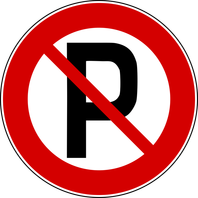 The two signs pictured on the above are extremely important for foreign drivers. The sign on the left (red circle and X over blue field) means NO STOPPING OR STANDING, the same as the NO STANDING ANY TIME signs we have in the States. In other words, even if you are just dropping something off at the Post don't do it--don't stop--even if you see locals doing it. They may have special permits.The sign pictured to its right means NO PARKING.... ever. You will normally see these signs on very narrow streets, especially as they pass through an urban town.
No Man's Land: the Dreaded ZTL 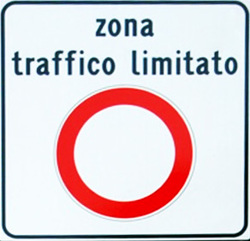 This sign is perhaps the most important one you will come across. Any sign with a red circle surrounding a white field is the basic symbol for NO CARS ALLOWED and is used to mark Zona Traffico Limitato (ZTL) areas. These are areas where you cannot drive into for fear of getting an expensive summons sent automatically to you back in the U.S. Most towns and villages have ZTLs. They are camera controlled. You will never see a policeman. You need to realize that there are all sorts of qualifying times and restrictions along with some ZTL signs. Before you go to Italy, take the time to look at ZTL signs, read websites that talk about the ZTL and even put the language on the signs into Google Translate to learn how they restrict the ZTLs. There are many that you are allowed to go through IF you are doing so during the permitted hours of the day, or permitted day of the week. (For instance, small towns might have ZTLs only active on one market day each week). The sign shown on the right basically means NO ENTRY. You will see these on one way streets, some dead ends and other streets that for whatever reason you are not permitted to drive into. Watch That Speed Limit!  Speed limit signs might be colored with a red circle or plain black and white or even blue. They might be square or rectangular. You have to keep in mind that Italy doesn't really function as one country with each province obeying the same standards and laws. Each region of Italy has separate deals with the national government, some are more independent than others and many set their own regulations. So, if you see a number on the side of a road that looks like a speed limit, it most likely is, even though the sign might look a bit different than in other areas you've traveled through. This one (photo right) is pretty typical for most areas. Be aware of the difference between MPH and KPH. A posted 50 KPH means the limit is around 31 MPH. You'll see this going through local towns (or even slower). On the autostrada you will typically see 90 (55 MPH) or 120 (68 MPH). We set our TomTom (we called him Tommy) GPS to MPH and the rental car's speedometer was set to KPH, a good method to gauge your speed and learn what local speed limits translate to in terms of MPH, along with the feel of your speed on the road. Do NOT follow the speed of local drivers! They know where the cameras and speed traps are, or might be leaving the upcoming speed zone before the end of the averaging zone. You see, many speed zones sensors average your speed going through the entire zone and only take a picture of your license plate/tag number just after you leave the last part of the averaged speed zone. Many towns in Italy have such zones as a large regional road passes through their main street. Be careful and don't speed up, even if a local road hog is driving on your rear bumper.  There is also this sign (at the right). The END SPEED ZONE sign. You will see this sign coming out of towns to let you know you can speed up again. Step on the gas, drive safely and enjoy the road ahead, that is, until you see the sign that we all recognize... The STOP sign. Unless you are Italian, of course... Then you simply ignore it. --Jerry Finzi Update 3/31/16: One of my Facebook amici offered an amusing way to remember the two basic types of signs in Italy: "I triangoli sono di pericolo, I rotondi sono di divieto" The triangles are of danger, the buttocks are of prohibition --Francesco Catalano Copyright, 2016 - Jerry Finzi, Grand Voyage Italy - All Rights Reserved
The first time anyone travels to Italy, there are always a list of "must sees" that they try to squeeze into the limited time of their voyage. Especially when you're traveling as a family, you try to satisfy everyone's goals and dreams. But there are some things that might be missed due the to tight time constraints of checking in, checking out, train schedules, car rental pickups and drop offs, ad infinitum. So I came up with an idea for a second trip to Italy where one doesn't have to do any "must sees" and try to experience even more of day to day life in Italy. This idea is based on something we totally missed out on during our intensive three weeks Voyaging through Italy--markets. Markets in Italian towns are on very specific days and times. Usually they start early in the morning (especially true for food markets) and often close early. Flea Markets might only be held once a week or month. Authentic antiques markets might be held even less than that--perhaps once a month or season. We missed market days either because we were in the wrong place, or in the right town on the wrong day. We missed early morning markets because of tight schedules for check out and check in times, and time spent driving from one location to the next. The next time around, we're determined to slow it down a lot, pick fewer "hub" places to stay so we can live the Italian life at a slower pace--while experiencing the wonderful markets. Here's the plan... Forget tourist hot spots and "must sees" and shop where the locals shop for food (planning lots of picnics and cooking back at your apartment's kitchen). Plan your agenda on where you will buy food, fish, clothes or antiques. Book an apartment in a central hub location so that you can journey out to this town and that on market days.... hunting for the best cheese, fruit, sausages, leather bags, hand crafted fabrics, lace and more. Find a genuine antique to bring back home. So, decide on what markets you'd like to experience, book a flight and an apartment and gas up that rental car... Here are some options of various types of markets all over Italy... Enjoy your shopping! Naviglio Grande Canal Antiquties Market, Milano In Milan, you can enjoy a fantastic antiques market right on the banks of the Naviglio Grande Canal. Stalls offer furniture, porcelain, books, jewelry, paintings and prints and spans nearly a mile from Viale Gorizia to the bridge on Via Valenza. The market is open on the last Sunday of each month with many bars, shops, restaurants and numerous art galleries in addition to the vendors. Piazza dei Ciompi Flea Market, Florence Open daily from 9am to 7pm this is considered Florence's best flea market. It really gets busy on the last Sunday of the month its 100 extra stalls also overflow into the streets around. There's the usual eclectic mix that makes flea market shopping so addictive! Campo dei Fiori Market, Rome Campo dei Fiori translates as Field of Flowers, and in fact, there is a large contingent of vendors that sell wonderful flowers here. But primarily, this is a food market. It's a stunning piazza in the heart of Rome not far from the Pantheon with a gruesome past--public executions were held here. Though filled with tourists in the high season, the market is also frequented by locals. By night, it transforms into a great place to have dinner in one of its many outdoor ristoranti. And if you're staying in Rome, you can walk to this and many other types of markets... and not have to pay for gas.  Mercato Nuovo, Florence The Mercata Nuovo was named the "New" market when it was built, around the middle of the 16th century in the heart of the city, just a few steps from the Ponte Vecchio. Initially, it was intended for the sale of silk and luxury goods and then for the famous straw hats, but today mainly leather goods and souvenirs are sold. In the corner niches, statues of famous Florentines were installed during the 18 century. The focal point of the loggia is the Fontana del Porcellino--fountain of the piglet. What you see is actually a copy of the original bronze wild boar by Pietro Tacca from the sixteenth century marble. The original marble of the Porcellino can be found at Palazzo Pitti. Popular tradition has it that rubbing the nose brings fortune, so over time, the piggy's nose has developed quite a polish. Visitors are encouraged to place a coin in the mouth of the boar after rubbing its nose, and superstition implies that the wish will be granted if the offering tumbles through the grate where the water flows. The slope of the grate is such that most coins do fall through, and are collected by the city. Lungo il Tevere festival, Rome Not exactly a market, per se, but in the summer, the Lungo il Tevere festival runs from mid-June through the end of August and features vendors, restaurants, music, and bars in festive tents lining the river walk on the Trastevere side of the river. It’s the place to be, often until the wee hours of the morning. Porta Portese, Rome In the work-a-day Trastevere neighborhood, this is probably the most famous flea market in Rome It stretches from Piazzale Portuense to Viale Trestevere and is held on Sundays from 6.30am to 2pm. Bargaining will get you anything from 10 to 30 % off, so give it a go. You'll find everything here, including a lot of junk, but keep your eyes peeled and you may come home with a treasure. Mercato Orientale, Genoa At the Mercato Orientale (Eastern Market) of Genoa you can find everything from tripe to baked goods and fresh pasta, plus textiles, fruits, vegetables, household goods and footwear. It is a true gathering place, crowded by the locals, where they purchase traditional products, local foods, and specialties from different cultures.A visit here is an authentic experience and not to be missed if you are into local color color, flavors and scents. Molfetta Fish Market, Molfetta (Bari) When you visit an old world palatial fish market building like the one just off the harbor in the port town of Molfetta, you realize that we Americans are very fussy in our fish preferences. While the average U.S. supermarket has perhaps 4-6 types of fish, some shrimp and clams, Italians enjoy a much wider variety of sea food. We like to buy our fish in little plastic trays, trimmed and cleaned for us by someone we might not ever see. This market is a lively place--and not just the shouting fish vendors--but the fish themselves... the marble display slabs are brimming with fish so fresh that most are still alive and flapping about, shrimp's tentacles feel about, sea urchin's spines move and octopus try to crawl away. If you can get past the magnificent smell of the place (our boy Lucas objected), this is an experience you won't want to miss. (Read A Blessing in Molfetta's Waters) La Vucciria Market, Palermo La Vucciria is a Palermo's colorful, exotic market . If you leave Piazza Marina with the sea behind you you'll reach Corso Vittorio Emanuele, just before Via Maqueda on the right you should see, hear and smell the market. The colors, flavors and voices of Palermo come together and vendors will try strongly to entice you to buy their offerings, from freshly caught fish to unusual vegetables and amazing spices. Food stalls sell an array of sandwiches--panelle, chickpea fritters, aubergines, octopus - you name it. There are places to sit and have a meal too... and as you sit overlooking the market you'll think you're in the middle of Shanghai or Casablanca instead of Sicily. Porta Palazzo, Turino This market is held every day in Piazza della Repubblica in Turin, very close to the Porte Palatine and the Duomo. If you want to fully enjoy the market of Porta Palazzo, Saturday is the day to go--the busiest day, but also because every Saturday just behind the market there is a flea market, where you could find old records, antiques, postcards, vintage clothing, glassware, ceramics and more. The main market is very mixed: fruit and vegetables, household goods, butchers, fish, cheese, sausage, shoes, clothing and spices. This market is huge (one of Europe's largest), but it's also one of the more multi-ethnic markets affording more exotic offerings in addition to the more traditional Italian produce. Piazza del Ferrarese, Bari (Puglia) Piazza del Ferrarese, named after a Ferrara merchant who lived here in the 17th century, provides an elegant entrance to the old town. On your left are the rounded arches of Sala Murat which holds contemporary art exhibitions, and on your right is the old indoor fish market. The piazza is lined with bars and cafés, an old section of roman road roped off in the middle. On certain days there are food vendors under tents. To the north it merges into Piazza Mercantile. But for the authentic experience, walk a block or so south along the waterfront and you'll come across the waterside fish market where the daily catch is sold directly from the fishermen. You'll see a covered structure with concrete tables where the fishermen are supposed to sell their wares, but being furbo, most avoid the fees the city charges for this and sell their catch along the sidewalk just outside the structure. Piazza Campo del Palio, Asti This is Piedmont's largest food market held in the Piazza Campo del Palio in Asti. The Campo is also where horse races are held in September. This market is considered a general market with varied products being sold. It is open twice weekly on Wednesdays & Saturdays... clothing, shoes, haberdashery, hardware’s, household items, cheese, meat and bakery stands--and of course, the famous sparking Asti Spumonte wine. Fruit and vegetables in the morning only. You might think about planning a trip in September and take in the Palio race too! Ballarò Market, Palermo This is the market where you will find a lot of locals doing their shopping. A Sicilian street market is a cacophony of sights, sounds and scents. Be prepared for the shouting, barking and singing of the vendors pushing their products on you--fruits, vegetables, fish and meats--which can intimidate the uninitiated. The name probably comes from Balhara village, where there were Arab merchants. There is a strong Arabian influence in Sicily. The ambience is heightened by colored tarpaulins suspended as tents to protect the wares from the elements. Ballarò market extends from Piazza Ballarò in the Albergheria district toward the main train station. Forte Dei Marmi Antique Market, Lucca (Region) Every second Saturday and Sunday of the month, more than 45 traders from all over Italy travel to Piazza Dante, Forte Dei Marmi to be a part of the monthly antique market. The best of Italy’s antique collectors are the ones who take part in the market. Sculptures, art, collectibles, jewelry, furniture, books and artifacts are some of the items that are available on sale at bargain prices in this market. If antiques are your thing, this is a must visit place for you. In the end, you'll love Lucca as a place to visit. It became one of our favorite towns in all of Italy, and our most favorite in the North. Forte Dei Marmi Flea Market, Lucca (Region) Aside from being a busy beach town in the Lucca province, Forte Dei Marmi is a shopper’s paradise. The Forte Dei Marmi flea market opens every Wednesday from 8.00 to 14.30 at Piazza Macroni near the city center. Traders from all over Italy come over to display their wares. Everything under the sun, from crockery to branded designer wear, is available at this flea market for bargain prices. During summers when the tourist inflow increases, this market is open even on Sunday’s. This is the perfect place to shop, as you get the best of Italy. Mercato di Mezzo, Bologna The Quadrilatero area of Bologna has a long history of trade guilds since the Middle Ages. The main craft guilds of the city such as goldsmiths, butchers, fishermen, furriers, barbers and the painters, and Salaroli (specialists who salt cure meat) had their headquarters in this area. Most of the guilds located in the street once called Mercato di Mezzo, today known as via Rizzoli, at the beginning of the 20th century also moved in the heart of the Quadrilatero. Nowadays the Quadrilatero is the historical center area bounded by Piazza Maggiore, via Rizzoli, Piazza della Mercanzia, via Castiglione, via Farini, Piazza Galvani and Via dell’Archiginnasio. Jewelers, butchers, delicatessens, greengrocer’s, bakeries, shops with traditional cuisine and craft activities and other specialized trades are located in these streets. Most of these shops have preserved the historic architecture and furnishings, thus making themselves genuine artistic treasures. From the elegant Piazza Maggiore, the roads lead to the narrow alleys of the old medieval market overflowing with goods on the stands and full of noisy sellers and customers going by. Porta Nolana Fish Market, Naples Just a few blocks north of the port in the area around Piazza Nolana, under two towers of the old Aragonese gateway that stood guard over the ancient port entrance to the city, you’ll find Naples' best seafood market. And if you don’t mind crowds, chaos and confusion, this market is not to be missed. The vendors shout and sing about their offerings. Rarely frequented by tourists, Porta Nolana Market is where locals go in search of ingredients for their daily meals--clams, mussels, oysters, shrimp, squid, octopus, sea bass, sword fish, anchovies and sardines. And if you travel here for the Christmas season, you'll find the place inundated with locals buying fish for their Christmas Eve "seven fishes" feast--bacala (salted cod) and eel, for example. All this is the freshest seafood you'll find anywhere. Seafood isn’t all that's here... fresh fruits and vegetables, meats and cheeses, breads and desserts, and grocery items round out the market’s offerings. Cortonantiquaria, Cortona This top quality antiques fair is held annually, in late August and early September, in 17th century Palazzo Vagnotti, Cortona (a mecca for tourists ever since Under the Tuscan Sun hit the shelves), and has been going since 1963, making it Italy's oldest antiques show. Cortonantiquaria is now considered one of the most prestigious fairs in Europe and many dealers visit it, resulting in correspondingly high prices to go with the great number of tourists that flock to this oversold, but beautiful hilltown. The event is usually held between the last week in August through the first week in September. It's best to check for the specific schedule online. Mercato Centrale, Florence The Mercato Centrale was an authentic, big city, down and dirty food market before... but after a multimillion dollar renovation, it rivals the overpriced Eatalys around the world. Nowadays it's more of a tourist attraction, where locals go very early in the morning to get their food, and the tourists take over in late morning. They sell amazing things here... cheese, breads, meats, fish, etc.... but the fit and finish of the place caused the priced to go sky high. On the upper floor of this grand old market building, they created a modern, chic, industrial space that holds essentially a modern, chic, "foody" court full of bars, restaurants, pubs and the like. The outside of the market is surrounded by tacking clothing and tourist kitchy stalls. The prices are high, but it might be worth it for the urban foody to look into. Mercatino dell'Antiquariato, Venice You'll need to check your dates for this one, as you only get four chances a year, in April, June, mid September and Christmas. The three-day market is home to over 100 stalls with professional vendors selling everything from postcards to pearls and is held in Campo San Maurizio. It's renowned for having genuine antiques and not junk. Large, well organized and rich with treasures, professional dealers from all over Italy come to this market to sell their precious wares. Cheaper than antique shops, it's the place to find genuine antiques, statuary, books, paintings, glassware, ceramics and furnishings. This is the place to shop for an authentic piece of Italian history to bring back home and treasure. Mercatino dell'Antiquariato simply means Antiques Fair, be sure to go to the one in Campo San Maurizio which is the authentic market. Fiera Antiquaria, Arezzo Probably the biggest and most famous antiques market in the country is held in Arezzo, Tuscany, on the first weekend of the month. There are usually over 500 stalls spread over the Piazza Grande and the surrounding streets, which are manned (and visited) by people from all over Italy. You can buy everything there, from a pair of palazzo doors to a lace handkerchief. Some things are overpriced and it does get very crowded, especially during the summer, with an estimated average 20,000 visitors, but you may find a bargain and it will certainly be an experience. Arezzo is easy to reach: it is an hour by train from Florence and a couple of hours from Rome. The market is ten minutes from Arezzo Train Station and the square is surrounded by antique shops. If you love antiques, this might be your perfect destination. Mercato Coperto Santa Scolastica, Bari This is a recently built market on Viale Geiovanni XXIII that contains a mix of fruits, vegetables, fish, cheeses, breads, clothes, shoes and more. Although a lot of vendors complain about the additional costs incurred when compared to their old market space in another part of the city, there seems to be a growing following for this modern facility. It's in a neighborhood just south of the Bari Centrale rail station, but it is fully under cover and would be a great place to shop on a rainy morning. Eataly, Bari Not exactly a traditional Italian Market, Eataly is becoming a worldwide chain of mega Italian food spaces... part market, part food courts... all Italian. There are only two Eataly locations in the States--Chicago and New York. There is another in Istanbul, one in Dubai and also in Japan. But fittingly, I suppose, there are seven Eataly locations in Italy... and Bari has one of the largest right at the waterfront in the old convention center. The space is huge--86,000 square feet! We ate in the Eataly in Manhattan and found it over-marketed... way overpriced, very crowded and hard to locate specific items. There were very long waiting times if you wanted to sit in one of the various places to eat. Still, if you feel like checking our how Eataly looks in Italy, check out the one in Bari just across the harbor from the old city on Lungomare Starita just past the lighthouse... or check out the other Eatalys in Torino, Milano, Roma, Firenze, Genova and Bologna. I hoped you enjoyed this little tour of the markets of Italy... there are a multitude of possibilities. Most small towns have markets--but only on specific days. All larger towns have many types of markets... some for fish, some for clothes, some for fruits and veggies and others for books, leather, birds or flowers. Here's a LINK for a tool to help you plan your marketing voyage. Plan your trip around a tour of markets, or in the least, when staying in a central hub location, make a list of the markets in the region within driving distance. You'll be living the Italiana Buona Vita for sure... Ciao e buon viaggio! If you like this post,please tell your friends, share it and leave a link on your favorite travel site. Grazie! --Jerry Finzi You can also follow Grand Voyage Italy on: Google+ StumbleUpon Tumblr Copyright 2016, Jerry Finzi/Grand Voyage Italy, All rights reserved There are 209 families with the Finzi name in Italy. This is what I discovered after using the mapping tool on the ITALIANNAMES.COM website. The tool is one of the best of this type that I've found on the Web. It's easy to use and can zoom into to particular regions. After typing in your family name and doing the initial search, click the "see how they are distributed in Italy" button. You will get a map of Italy numbering how many families have your name in each region. Click on a particular region and it will zoom in to show the towns they are living in.
If you want to find out more specifics, you could look up your family name in the Italian White Pages along with the name of a town and get both addresses and phone numbers. In case you want to know what your family names mean, here is a site which lists the Origins and Etymology of Italian Surnames... both the meaning and where the name originated. Good luck in your family research! --Jerry Finzi You can also follow Grand Voyage Italy on: Google+ StumbleUpon Tumblr Take a funny look at the challenging driving on the Amalfi Coast in this video Lisa shot while heading toward Salerno and onward toward the mountains of Basilicata. The Amalfi Coast Road is curvy and very narrow with the cliff on one side and nothing but air and sea on the other. When researching the Amalfi Coast Road, I read that the buses are specially made--narrower than normal buses. Don't you believe it! They are every bit as wide as large tour buses in the States. When driving the Coast Road you with share the road with them... along with center-lane scooters and motorcycles (the line in the middle IS their lane it seems), cyclists (often going faster than you), teeny cars hugging your butt so close you can't see them in your mirrors, and huge, double tandem 18 wheelers! And there are more than a few pazzo Italian drivers passing on blind curves (often with a quick beep beep of their horn as they come around) and crossing over the line. Another danger is cars, trucks and buses parking on the side of a narrow road (most of Amalfi is a no parking zone along the roadside) that you'll have to get around while cars are coming toward you. In some places they are starting to introduce alternating stop lights, giving the east and west bound traffic each their turn on especially narrow stretches. But don't trust this too much... Italians are notorious for ignoring both traffic laws, signs and lights. Enjoy this video and then if you like, check out the rest of our experiences during our three week Voyage through Italy. As for driving the Amalfi Coast Road... I did it! I don't have a medal to prove it, but I surely deserve one! The driving was intense--more than you can imagine--but the pleasure of seeing the beauty all around the Coast Road was like living in a dream... Enjoy the video... For more on Amalfi Coast area and driving, read these posts:
Visiting Pompeii: A Road Too Far Amalfi Coast Drive: Part Paradise - Part Hell Hertz Really Hurtz and the Sewer the is Naples: Renting a Car in Italy Ok, Hold Your Breath, 'Cause this is Really Gonna HERTZ! Renting cars in Italy --Jerry Finzi You can also follow Grand Voyage Italy on: Google+ StumbleUpon Tumblr  In places like Naples, where the Mafia controls the waste removal companies and strikes are a problem, Zero-Packaging shopping could really lesson the amount of trash In places like Naples, where the Mafia controls the waste removal companies and strikes are a problem, Zero-Packaging shopping could really lesson the amount of trash Way back when my son, Lucas was in Kindergarten (he's 12 now), one of his projects was to learn about the environment and to "Reduce, Reuse, Recycle"--the Three Rs they called it. Ever since then, we have been recycling plastics, glass, metal and papers. Each week our large trash bin is nearly empty, but I'm constantly amazed at how full the recycling bin is. In fact, we are thinking of ordering the larger size bin from our recycling company. When you think about it, the landfill worthy trash we throw out can be very little when compared to the absolute glut of packaging that we bring into our homes each and every week: Cans, glass jars, plastic bottles, plastic jugs, cardboard boxes, plastic clam shells packs, milk containers, cereal boxes, foil containers... and then there's Amazon deliveries with their over-sized cartons holding one or two small items! We should stop and consider the multitude of packaging from things like pasta, rice, cereals, coffee, olive oil, cookies, dish detergent, laundry soap, window cleaner and more. I used to be able to buy a large commercial size of Windex and would refill the same plastic spray bottle over and over. Lately I can't find large 2 gallon jugs of Windex anywhere and am forced to purchase the small spray bottle size once again. It's a shame... The two older Windex spray bottles have been refilled for over a decade! To take it a step further, wouldn't it be great if we could just bring an empty container to a supermarket and refill my supply of Frosted Flakes, dish-washing liquid, olive oil or pasta? Well, you can.... in Italy and other countries...  Zero-Packaging Shopping (also called Zero-Waste or Packaging-Free) is taking off in Italy and some other European countries. Customers bring their own empty containers to the stores to refill them from bulk dispensers. If you don't have a container, either they offer bins full of clean, recycled free containers or they offer new ones for a small fee. The consumer saves big bucks because the price of packaging--which can be a big chunk of the price--is gone. There's a lot of advertising and marketing dollars that we subsidize in all that packaging on the shelves of our supermarkets! Both smaller shops and larger supermarket chains are beginning to embrace this new green, pro-consumer concept. And you won't believe the range of products you can fill up on: pasta, candy, rice, cereal, cooking oils, soaps, cleaning products, detergents and yes, even wine! Picture the local upscale mall with it's bulk candy store where you buy priced by the weight and fill a bag--only the bins are much larger and the selection of what you can bulk up on includes just about anything you can buy in a bottle, box or bag. You buy only what you need--as much, or as little... For instance, instead of buying an expensive glass jar containing a bunch of vanilla beans or cinnamon sticks, you can buy just one one. Some of the stores even offer environmentally Greener services or are part of the Slow Food movement (the Local Food or Locavores movement) where most or all products come from local sources, drastically reducing the carbon footprint by lessening the carbon fuels needed for transportation in modern food supply chains. Here's a sampling of some Zero-Packaging stores:  An aisle of dispensers in an Auchan store An aisle of dispensers in an Auchan store Auchan In Italy, Auchan is one of the largest of all supermarket chains and in 2004 added bulk products in dispensers to 48 of its stores throughout the country. They offer cereals, dried fruit, pasta and rice to detergents--a total of 800 products, including frozen foods, such as fish and vegetables. Customers purchase only the amount of product they need. Because these sales contain no packaging, it's estimated that Auchan alone keeps about 4,000,000 packages out of landfills every year--about 170 tons worth. 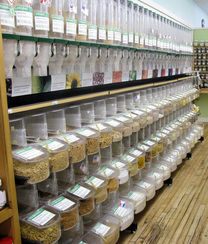 Negozio Leggero's simplistic style Negozio Leggero's simplistic style Negozio Leggero Negozio Leggero has stores in many cities in Italy: Turin, Milan, Morbegno, Asti, Moncalieri, Rome and Novara. They offer rice, grains and cereals, pasta, eggs, and candy in bulk without packaging. The point of sale in Novara provides home delivery by bike. Moreover, all points of sale organize thematic courses and days dedicated to the world of food.  Self-Service detergent dispensing kiosk Self-Service detergent dispensing kiosk Crai Eco Point Another large supermarket chain we saw in Italy, Crai's Eco Point chain, has 34 locations all over Italy. They offer bulk pasta, rice, cereals, legumes, dried fruit, coffee, spices, sweets and detergents, as well as pet food. Their efforts are saving an estimated 1,000,000 disposable packages each year. 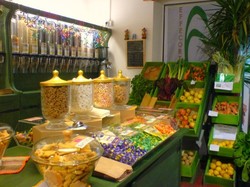 Peso Netto The Peso Netto (meaning, "Net Weight") store is located in Pesaro and reflects the “Zero Kilometres” and local food philosophy. You can find everything: fruits, vegetables, bread, oil, meat, wine and beer. All products sold are from local suppliers. The modern idea of packaging free combines with a feeling of shopping in an ols school local market.  Effecorta Effecorta is a renowned store in the city of Milan. It is located outside the center because “we believe that Effecorta Milano should be a corner shop, where people can go to by bike or on foot”, the owners states. This point of sale offers home delivery by bike and it is furnished with bulk products, such as cereals, coffee, drinks and cosmetics. Points of sale are located in Capannori (the first one to be set up) and in Prato.  Borgo Etico Borgo Etico is a co-operative located in Cesena. It offers varied services, including a packaging-free supermarket. Over 900 products are sold, including vegan and gluten-free foods. All products come from a short supply chain and are sold with no packaging.  Bottega Origini This is a local shop in Pavia, Liguria. The old style shop offers a lot besides its nostalgic charm, including wine and seasonal foods locally produced. The young, enthusiastic people serving the customers are one of its benefits.  Bottega degli Sballati This small shop opened in Ispra, Varese in 2013. It offers both bulk certified organic and Zero Kilometres foods. The origin is specified on every product, sometimes showing the pictures of who worked in the supply chain, such as farmers and artisans. It's got a strong following from the health and organic crowd. Verdessenza Translated, Verdessenza means Solid Green. The environmentally conscious owners strive to sell foods and other products with a low environmental impact. Even the materials used in the construction of the shop are "Green". Suppliers are selected depending on their ethical views on the environment with most products being certified organic, locally sourced and offered in bulk without packaging. "Bring your basket." They even offer bike tire repair kits and air pumps! Eco-Facts:
If you're a bit jealous and would like to see Zero-Packaging shops here in the U.S., keep an eye on Texas. There is already a store in Austin which that sells local and organic products, all Packaging-Free. It's called In.gredients the country's very first "package-free, zero waste grocery store". Mostly in the state of Arizona and in 2016 opening more stores across the U.S., there is Sprouts, a health conscious supermarket chain that offers over 300 products in its bulk bins. If the trend continues, perhaps you will see Zero-Packaging in a store near you! The benefits are many:
For the time being, the next time you're in Italy, bring your basket and see what you think of going au naturale... --Jerry Finzi If you enjoyed this article, please SHARE it and LIKE it on your favorite social media site. Ciao! We also have pages on: Google+ StumbleUpon 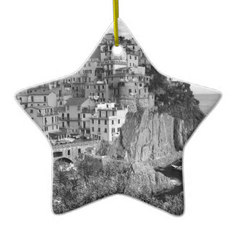 The rugged coast of the Cinque Terre is popular with hikers who love to walk from town to town in along this magical coastline in Northern Italy. Most think of Cinque Terra as a summertime destination, but it might be worth a visit during Christmastime for an unusual way to spend your Natale. If you decide to go to Cinque Terre during the holidays, consider that most restaurants and hotels are seasonal. Rent a small apartment and live like the locals do during the Christmas season and you'll discover something very different indeed... Presepe of Manarola For instance, you will find the world's largest presepe (nativity display) in Manarola, clinging to one of the craggy hilltops overlooking the sea. Every year on December 8th (Feast of the Immaculate Conception, and the beginning of the Christmas season in Italy) the lights are flipped on and thousands gathered in the village cheer for this wonderful illumination. The evening is topped off by fireworks. The lights stay well into January or February (in the typical Italian style of timekeeping). Mario Andreoli, a retired railway worker, started building the presepe in 1976 and has spent the decades covering the entire hilltop with illuminated shaped figures. In 2007 his creation was declared the largest nativity in the world by Guinness World Records. It has 6 miles of electric cables, 15,000 bulbs, 300 life sized figures, mostly made from recycled junk. It also went off the grid in 2008 with the addition of a dedicated solar powered electric system.  Christmas Star and Baby Jesus Born from the Sea in San Terenzo Ok, now this one is really something different. In the beach town of San Terenzo (a well known scuba diving destination) every Christmas Eve, just before midnight, you will see a light glowing beyond the smoke bombs on the beach in the surf.... it's the Christmas Star emerging from the water! You will then also see a bevy of wetsuit-clad Magi greeting the star... and then a huge clam shell pops out of the water, opening up to reveal the newborn Baby Jesus, which the "Magi" carry ceremoniously toward the spectators. The "beach people" chant the Prayer for the Diver (they have prayers for everything in Italy) just before carrying the Infant Jesus and his clam shell crib to the Church in preparation to Christmas’s Holy Midnight Mass. In every corner and street of San Terenzo, lights and decorations add to the magic and folklore, and thousands of candles shine bright in the streets. Only in Italy! --Jerry Finzi
If you enjoyed this article and found it useful, please SHARE it and LIKE it on your favorite social media site. Buon Natale! We also have pages on: Google+ StumbleUpon --Jerry Finzi
If you enjoyed this article and found it useful, please SHARE it and LIKE it on your favorite social media site. Buon Natale! We also have pages on: Google+ StumbleUpon 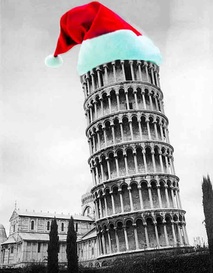 When Christmas rolls around, we all know how to greet people here at home with a "Merry Christmas" or "Have a happy holiday!" or "Have a great New Year!", but what do Italians say in Italy around the holidays? If you ever plan on spending the Christmas Holiday season in Italy, you need to know the jargon of Natale. There are a couple that you might already know...Natale is Christmas, Buon Natale is Merry Christmas and Santa Claus is Babbo Natale (Father, or more literally, Daddy Christmas). But there are many phrases you need to know to mix it up a bit.
The Holiday Season itself:
--Jerry Finzi If you enjoyed this article and found it useful, please SHARE it and LIKE it on your favorite social media site. Buon Natale! We also have pages on: Google+ StumbleUpon With aggressive photo-bombing netting some costumed fakers €12,000 a month, action is needed By Michael Day, Rome @michael2day Even as restorers scrape centuries of grime from the Colosseum, Rome’s authorities are planning a ground level clean up by cracking down on the costumed legionnaires and centurions who pose for photos with tourists before demanding cash with menaces. The motley crew of faux-soldiers and gladiators from the ancient world who operate around Italy’s top monument appear more Carry on Cleo than Antony and Cleopatra. But that does not stop them pocketing upwards of €400-a-day from intimidated visitors. Some of the greedier legionnaires make up to €12,000 a month, which sounds extraordinary, but adds up, given they are said to pose for photos 10 times a day, on average – and often demand €50 or more a time. Commissioner Francesco Paolo Tronca, who is temporarily in charge of the capital following the ousting of Mayor Ignazio Marino, has said he wants the tawdry spectacle to end. (Click Here to Read More...) --Warning from Grand Voyage Italy: Don't make the mistake of trying to take your own photo of these costumed bullies. If they catch you lifting a camera and pointing it at them, they'll surround you, chase you down and bully you into paying 20 Euros for the mistake--or talk you into paying 50 Euros or more for them taking a photo for you. These guys are seedy... think of them just like the unauthorized Mickey Mouse, Pooh Bear and ratty looking Elmo costume thugs on Times Square in New York. --JF
Names can tell a lot when researching our Italian roots. But there are some names which tell a sadder tale back several generations or so. Orphans and foundlings in Italy were given special names. This list includes the most common surnames used.
Some means of names are pretty obvious: Bastardo... for bastard. Della Femina for From a Woman. Dell'Amore means From Love. All are a testament to those who came before and the trials they must have gone through to get through troubled times of war or poverty or disgrace. Many suffered through the horrors of war or famine. Anyone bearing these Italian surnames should be proud of what their fore-bearers went through to give life to their children and their childrens' children. Although these names do have a high probability of being rooted in an ancestor being orphaned, there are exceptions to this. Amodio (Love God), Arfanetti (Orphan), Armandonada (Donated by Hand) Bardotti (The sterile hybrid offspring of a male horse and a female donkey) Bastardo (Bastard), Circoncisi (Circumcised) Colombini (Little Dove), Dati (from you) De Alteriis (Changling), De Angelis (From Angels) Della Donna (From a Lady), Della Femmina (from a Female) Della Fortuna (from Luck), Della Gioia (From Joy), Della Stella (From a Star) Della Casagrande (of the Hospital/Orphanage) Dell 'Amore (from Love), Dell'Orfano (the Orphan) Del Gaudio (of Grace & Goodness), Diodata (God Diven) D'Amore (Love), D'Ignoto (from Unknown), Diotallevi (God Raised You) Esposto, Esposito, Esposuto (Lost) Fortuna (Luck), Ignotis (Unknown), Incerto (Uncertain) Incognito (Unknown) Innocenti, Innocentini (The Lost Ones) Mulo (Mule), Naturale (Natural/Careless) Nocenti, Nocentini (Little Innocent), Ospizio (Foundling Home) Palma (when child is abandoned on Palm Sunday) Proietti (Thrown/Project), Ritrovato (Discovered) Sposito (Lost), Spurio (Illegitimate) Stellato (The Stars), Trovatello, Trovato (Foundling) Ventura, Venturini (Angels, Little Angels) --Jerry Finzi If you enjoyed this post, please SHARE it and give a LIKE. Grazie. |
Categories
All
Archive
January 2021
|



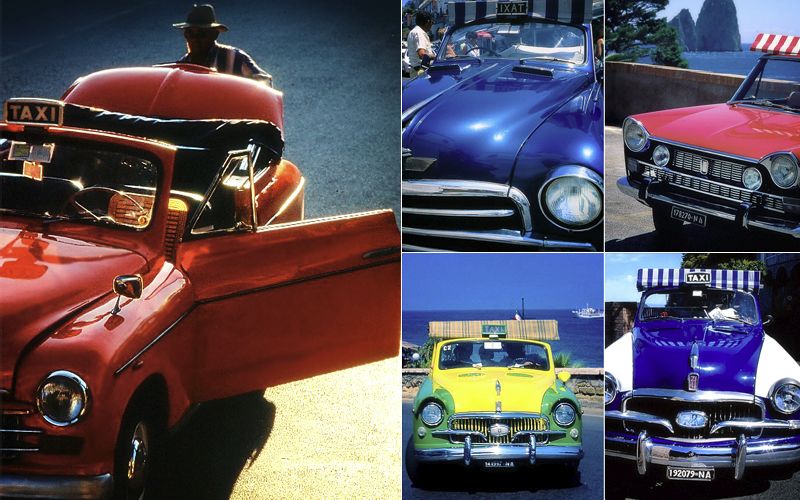
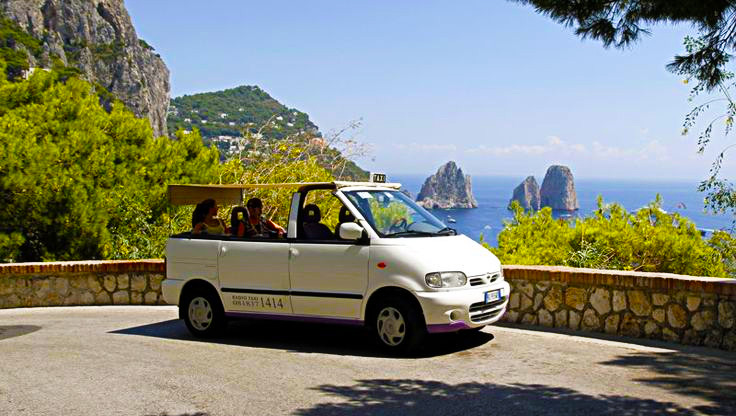



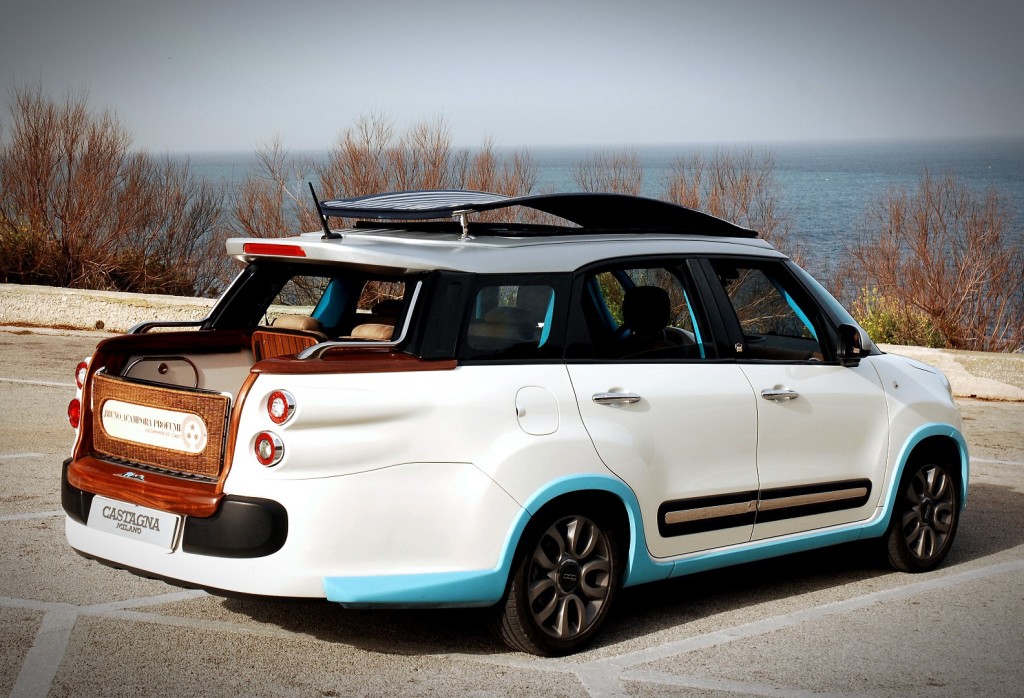




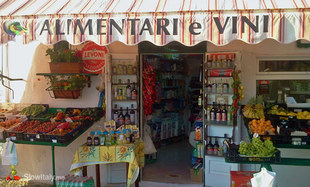







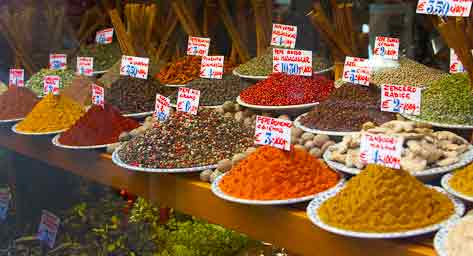





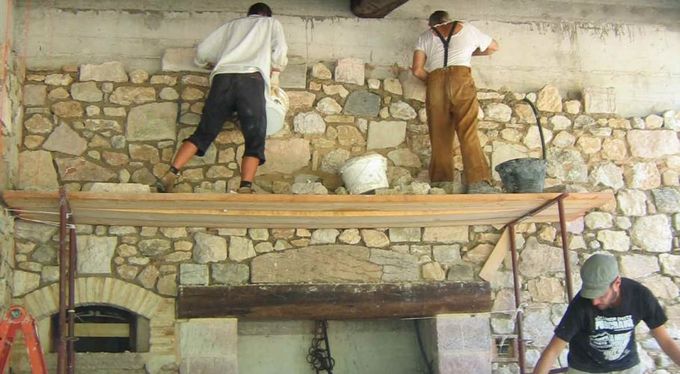
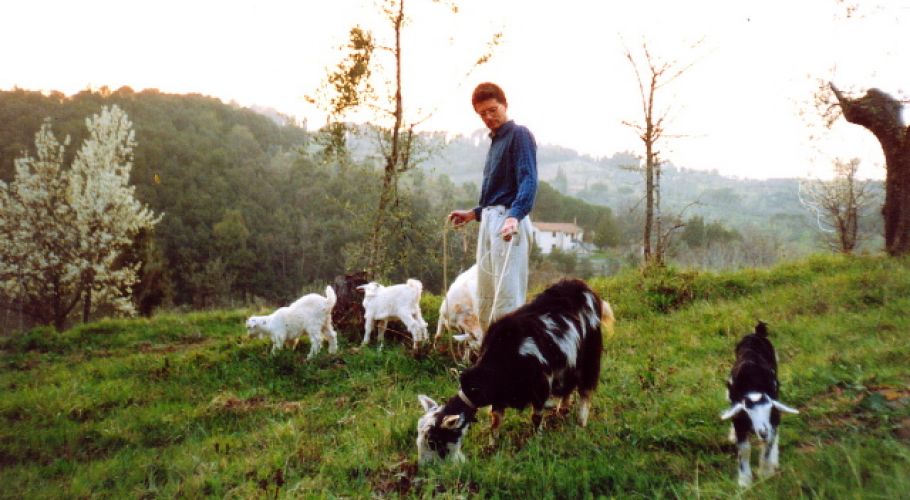














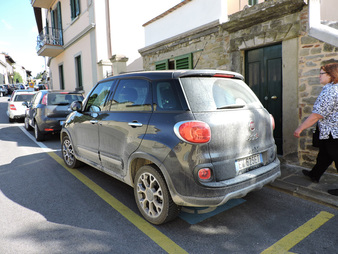











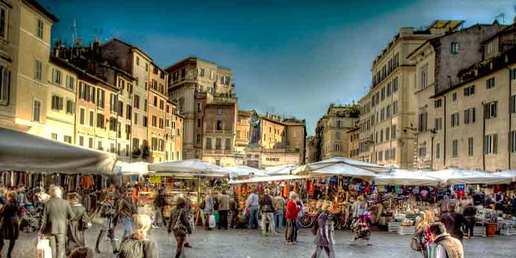


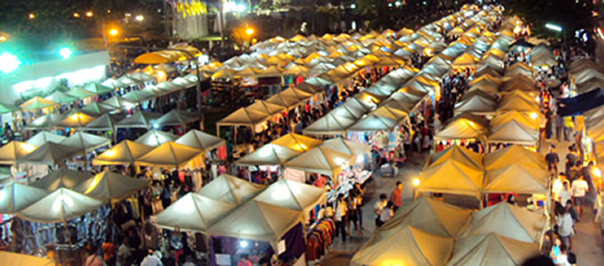









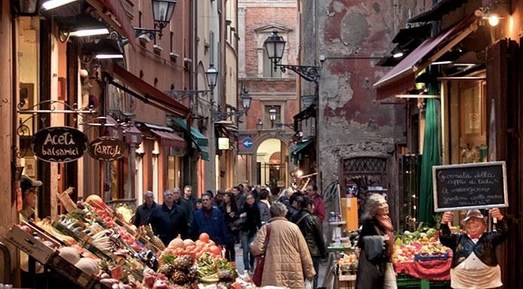





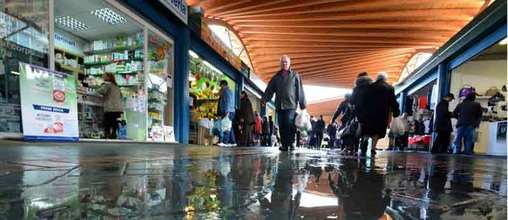





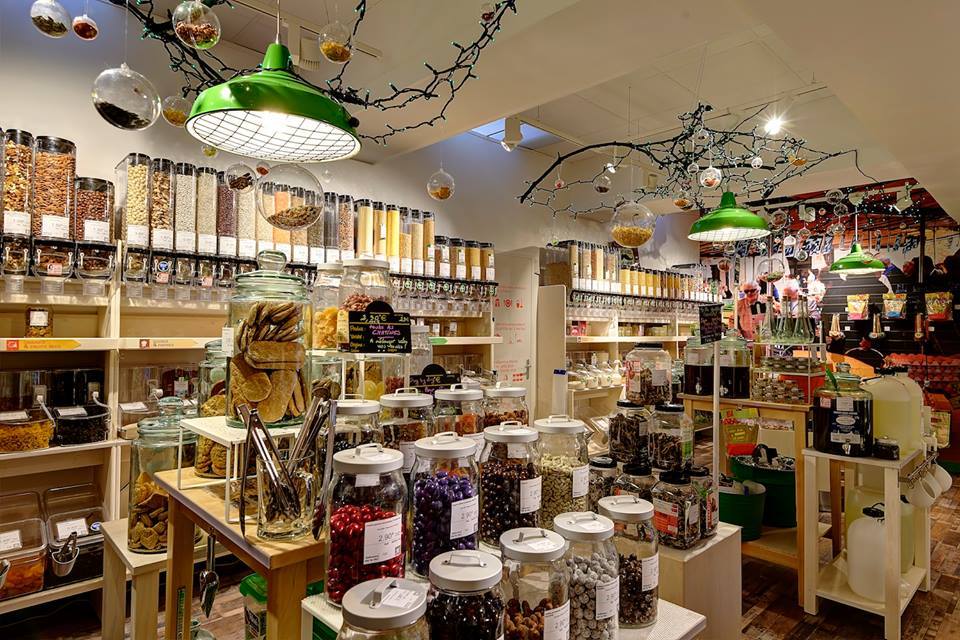












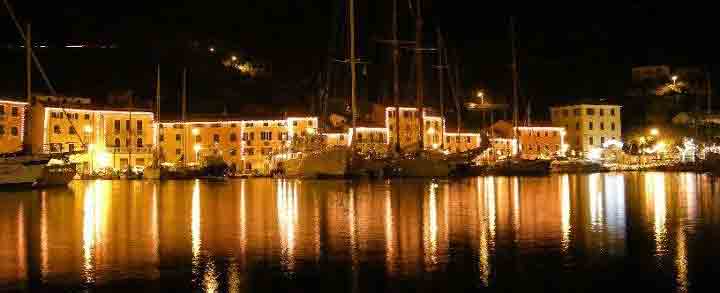



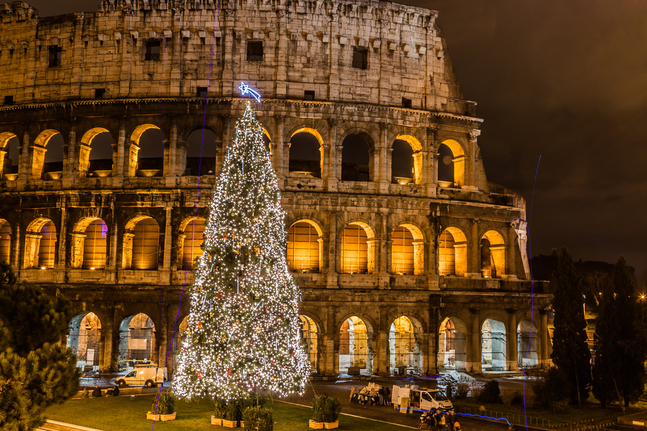


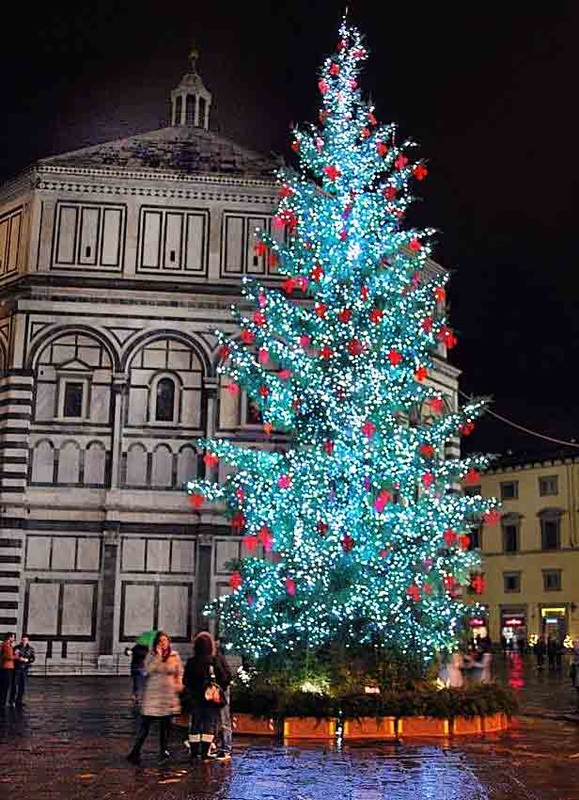








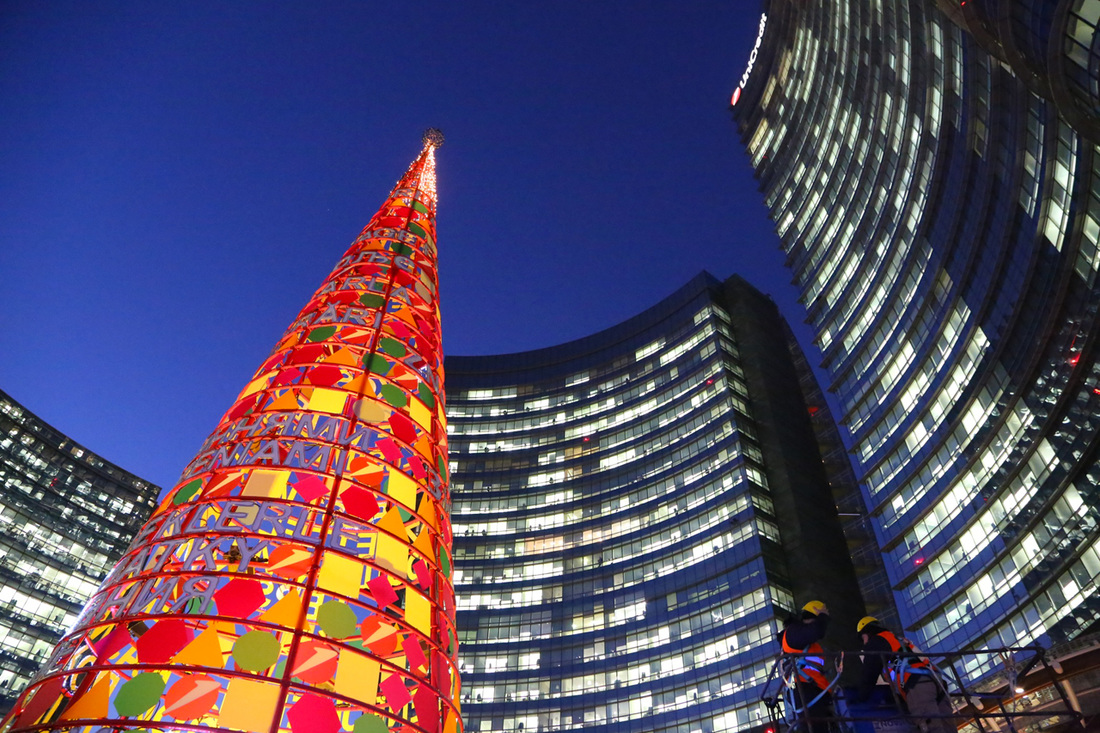

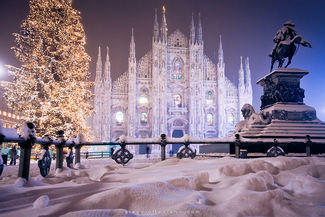













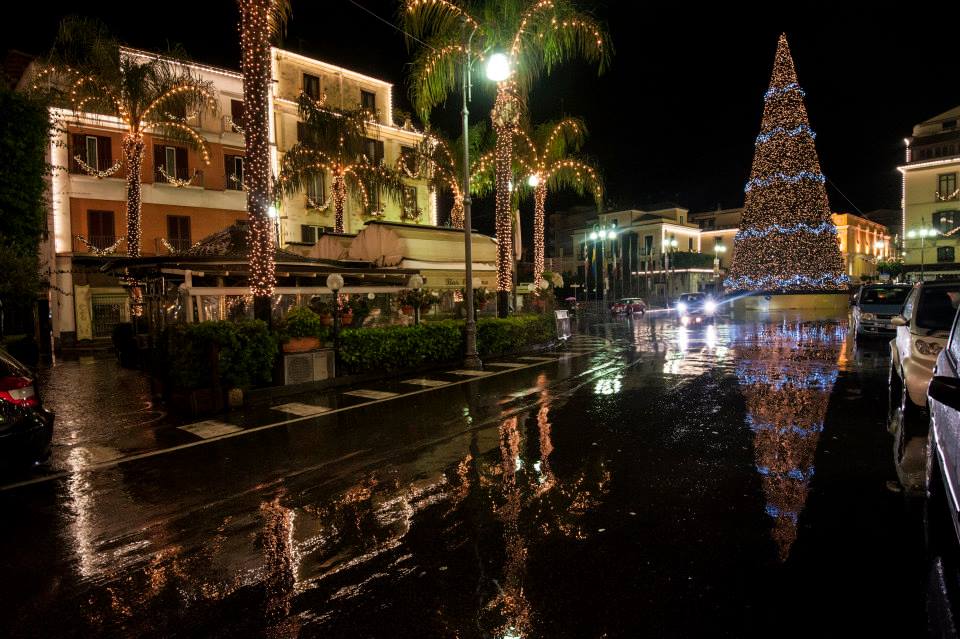



 RSS Feed
RSS Feed
